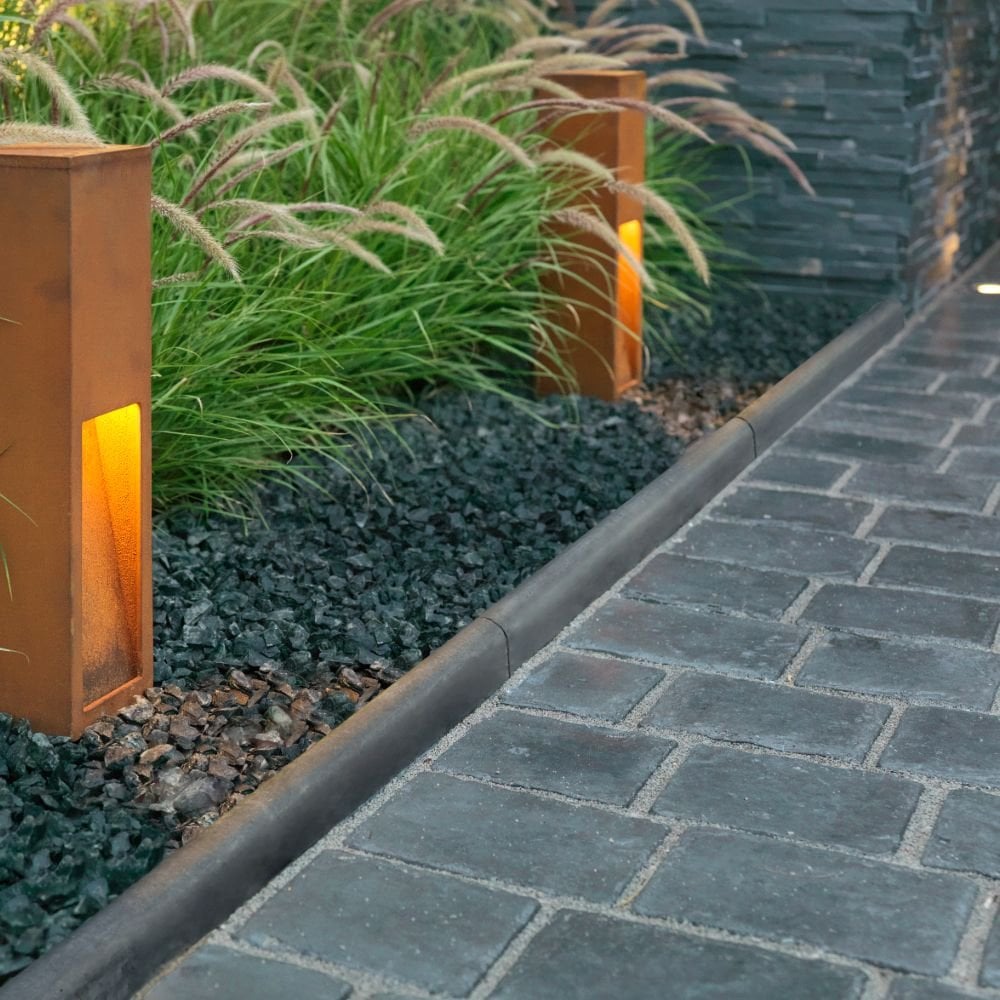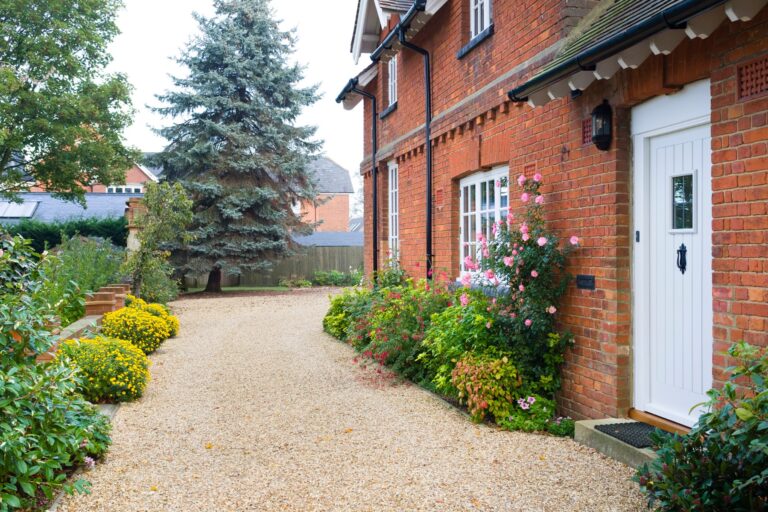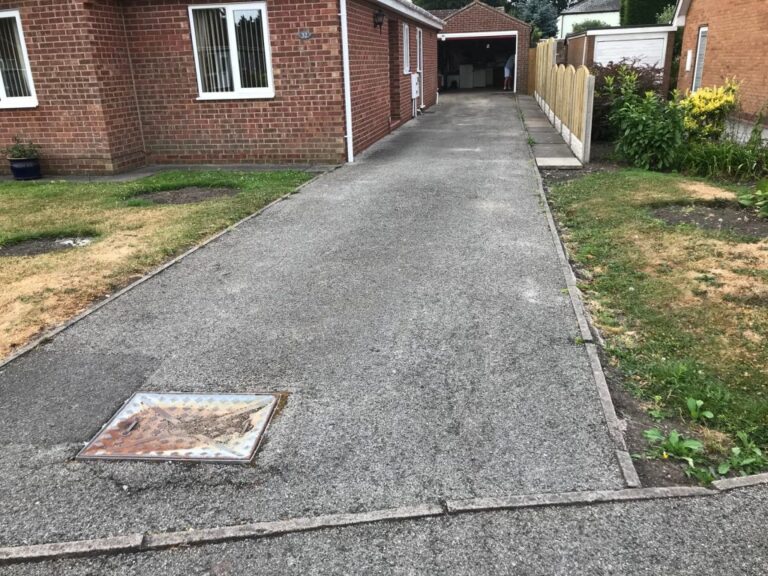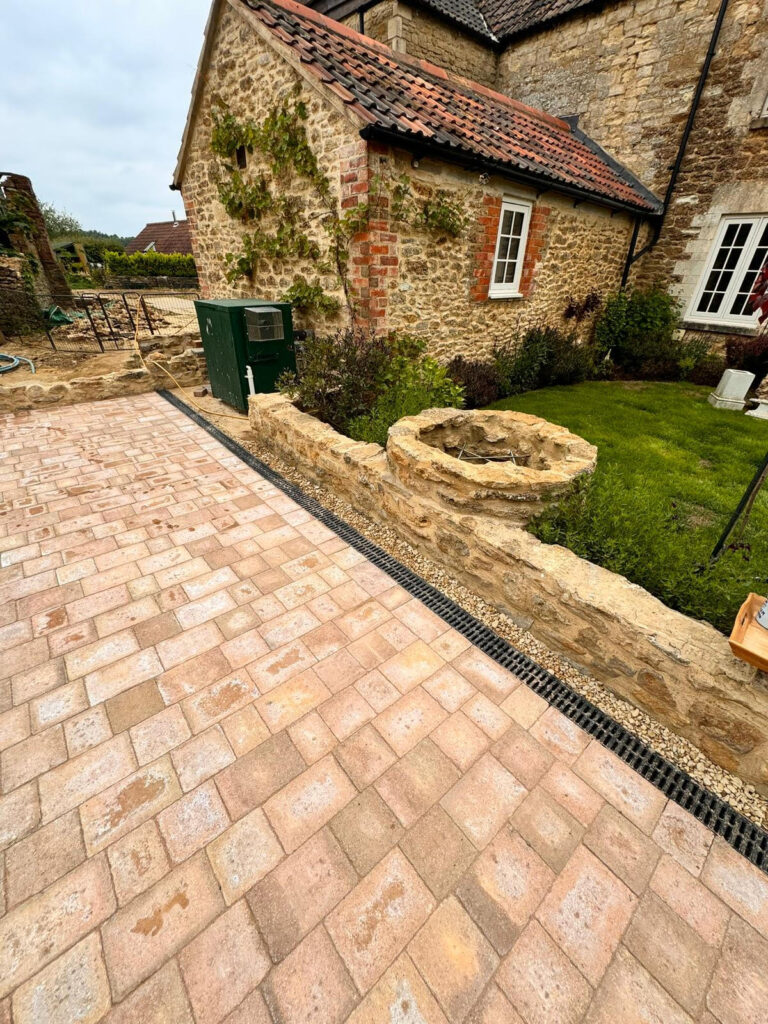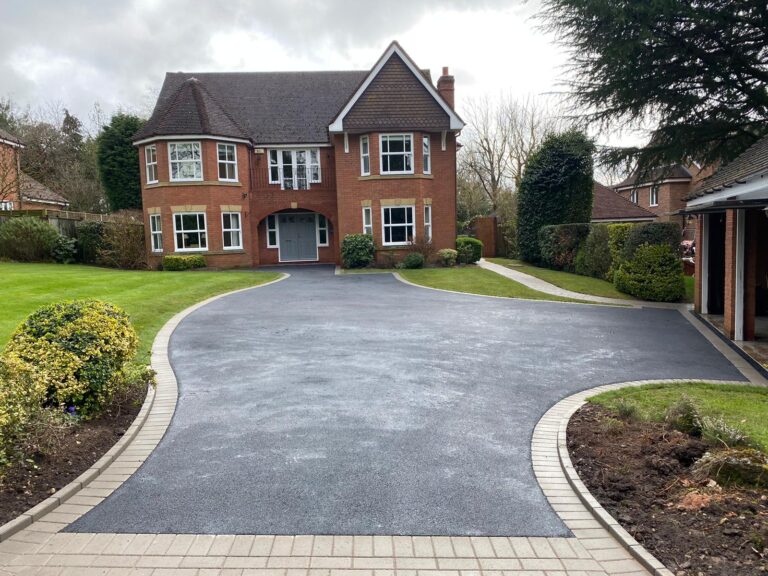Driveway edging is often overlooked during the planning stage, but it plays a vital role in both the appearance and functionality of your driveway.
The right edging can provide a polished, finished look to your driveway while helping to prevent gravel or other materials from shifting.
Additionally, it can enhance the overall design and complement the style of your property.
When choosing the right edging for your driveway, there are several materials to consider, including brick, stone, and concrete.
Each option comes with its own set of advantages, so it’s important to select the one that suits your driveway design, budget, and maintenance preferences.
Why Is Driveway Edging Important?
Before diving into specific materials, it’s worth understanding why driveway edging is so important. Edging serves several key functions:
- Prevents shifting: Edging keeps the materials in place, whether it’s gravel, block paving, or tarmac. Without edging, the materials can easily spill out onto your lawn or garden.
- Enhances appearance: Well-chosen edging can give your driveway a neat, polished look and help it blend seamlessly with your property’s exterior.
- Defines boundaries: Edging defines the limits of your driveway, making it clear where the driveway ends and the garden or lawn begins.
- Increases durability: Edging protects the driveway’s integrity by preventing erosion and providing additional support, particularly for gravel and loose materials.
Brick Edging
Brick is a popular and classic choice for driveway edging, offering both style and durability. It works well with a variety of driveway materials, including tarmac, gravel, and block paving. Brick edging adds a traditional and clean look to any driveway while providing strong support to keep materials in place.
Advantages:
- Aesthetic appeal: Brick edging has a timeless look that complements both traditional and modern driveways. You can choose from various colours, styles, and patterns to match the overall design of your property.
- Durability: Brick is a robust material that can withstand the weight of vehicles and the weather elements without cracking or eroding over time.
- Low maintenance: Once installed, brick edging requires minimal maintenance. A simple wash every so often will keep it looking neat.
Disadvantages:
- Cost: Brick can be more expensive than some other materials, especially if you opt for high-quality or custom bricks.
- Installation: Laying brick edging can be labour-intensive, especially if you need to dig and prepare the ground properly.
Stone Edging
Stone is another durable and attractive option for driveway edging. From natural stone to granite or limestone, stone creates a more rustic, earthy feel that’s perfect for country-style homes or properties with a more natural landscaping theme. Stone edging can work well with gravel, block paving, and tarmac driveways.
Advantages:
- Natural look: Stone gives a driveway a sophisticated yet natural appearance, enhancing the aesthetic of your property. It blends well with gardens and greenery, providing a seamless transition from driveway to lawn.
- Long-lasting: Stone is incredibly durable and can withstand the weather conditions in the UK, from heavy rain to freezing temperatures. It’s also resistant to wear and tear from vehicle tyres.
- Variety: With stone, you have a wide variety of options in terms of texture, colour, and shape. You can choose larger cobbles for a more rustic feel or polished stones for a refined look.
Disadvantages:
- Cost: Like brick, stone can be more expensive than other edging materials. Natural stone, in particular, can be costly to source and install.
- Maintenance: Stone edges can become uneven over time, especially if the ground shifts. They may need periodic adjustments to ensure they stay in place.
Concrete Edging
Concrete is a versatile and practical option for driveway edging. It can be moulded into a variety of shapes and sizes, making it an ideal choice for custom designs. Concrete is often used in modern or minimalist driveway designs due to its sleek, uniform appearance. It is particularly effective when paired with concrete or tarmac driveways.
Advantages:
- Affordable: Concrete is generally less expensive than brick or stone, making it a budget-friendly option for driveway edging.
- Customisable: Concrete can be poured into any shape, allowing for a highly customisable design. You can choose from a wide range of colours, textures, and finishes, including stamped concrete that mimics stone or brick.
- Durability: Concrete is highly durable and can withstand heavy loads and the elements without cracking or eroding. It’s also resistant to weed growth.
Disadvantages:
- Cracking risk: While concrete is durable, it can crack under pressure or due to temperature fluctuations. However, proper installation and reinforcement can mitigate this issue.
- Aesthetic limitations: While concrete can be customised, it may not have the same visual appeal as brick or stone. It may not blend well with more traditional or rustic properties.
Choosing the Right Edging Material
When choosing the right edging for your driveway, it’s important to consider several factors to ensure the material fits your needs:
- Budget: Different materials come at different price points. While brick and stone tend to be more expensive, concrete offers a more budget-friendly option.
- Style: Consider the overall design of your home and garden. If you have a modern property, concrete or brick might be ideal. For a more traditional or rustic look, stone or brick may be the better option.
- Maintenance: Some materials, like brick and stone, require less maintenance, while concrete may need periodic repairs if cracks develop.
- Durability: All of the materials mentioned above are durable, but stone and brick are particularly robust in harsh weather conditions.
Selecting the right driveway edging is an important decision that will affect both the aesthetics and functionality of your driveway.
Brick, stone, and concrete are all excellent choices, each offering a unique set of benefits.
By considering factors such as budget, style, and maintenance needs, you can choose the material that works best for your driveway and your home.
With the right edging, you’ll not only enhance your driveway’s appearance but also improve its longevity and functionality.

